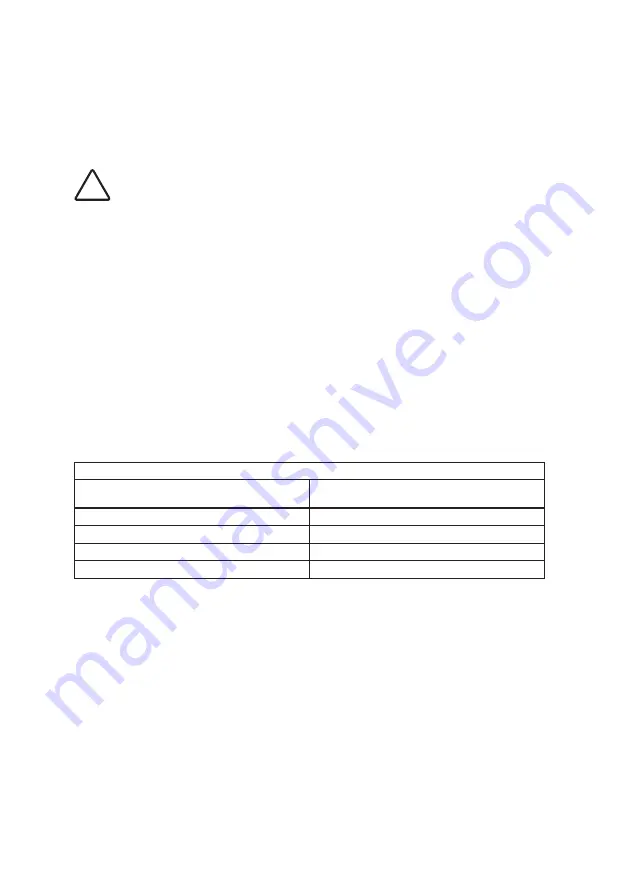
SECTION 8 |
Installation
34
8.4.3 Connection from Batteries to the DC Input Side – Sizing of
Cables and Fuses
CAUTION!
The input section of the inverter has large value capacitors connected
!
across the input terminals. As soon as the DC input connection loop
(Battery (+) terminal
External Fuse
Positive input terminal of
inverter
Negative input terminal of the inverter
Battery (–) terminal)
is completed, these capacitors will start charging and the unit will
momentarily draw very heavy current to charge these capacitors that will
produce sparking on the last contact in the input loop even when the unit
is in powered down condition. Ensure that the fuse is inserted only after all
the connections in the loop have been completed so that sparking is limited
to the fuse area.
Flow of electric current in a conductor is opposed by the resistance of the conductor.
The resistance of the conductor is directly proportional to the length of the
conductor and inversely proportional to its cross-section (thickness). The resistance
in the conductor produces undesirable effects of voltage drop and heating. The size
(thickness / crosssection) of the conductors is designated by mnμ. Table 8.1 below
gives Resistance in Ohm (Ω) per 30 cm at 25°C / 77°F for the wire sizing recommended
for use with this inverter.
TABLE 8.1 WIRING RESISTANCE PER FOOT
WIRE SIZE, Mmq
RESISTANCE IN OHM (Ω)
PER FOOT AT 25°C / 77°F
35 Mmq
0.000159 Ω per 30 cm
50 Mmq
0.000096 Ω per 30 cm
70 Mmq
0.000077 Ω per 30 cm
95 Mmq
0.000050 Ω per 30 cm
Conductors are protected with insulating material rated for specific temperature
e.g. 105°C / 221°F. As current flow produces heat that affects insulation, there is a
maximum permissible value of current (called “Ampacity”) for each size of conductor
based on temperature rating of its insulation. The insulating material of the cables
will also be affected by the elevated operating temperature of the terminals to which
these are connected.
The DC input circuit is required to handle very large DC currents and hence, the size
of the cables and connectors should be selected to ensure minimum voltage drop
between the battery and the inverter. Thinner cables and loose connections will
result in poor inverter performance and will produce abnormal heating leading to
risk of insulation melt down and fire. Normally, the thickness of the cable should be
such that the voltage drop due to the current & the resistance of the length of the
cable should be less than 2% to 5%. Use oil resistant, multi-stranded copper wire
















































